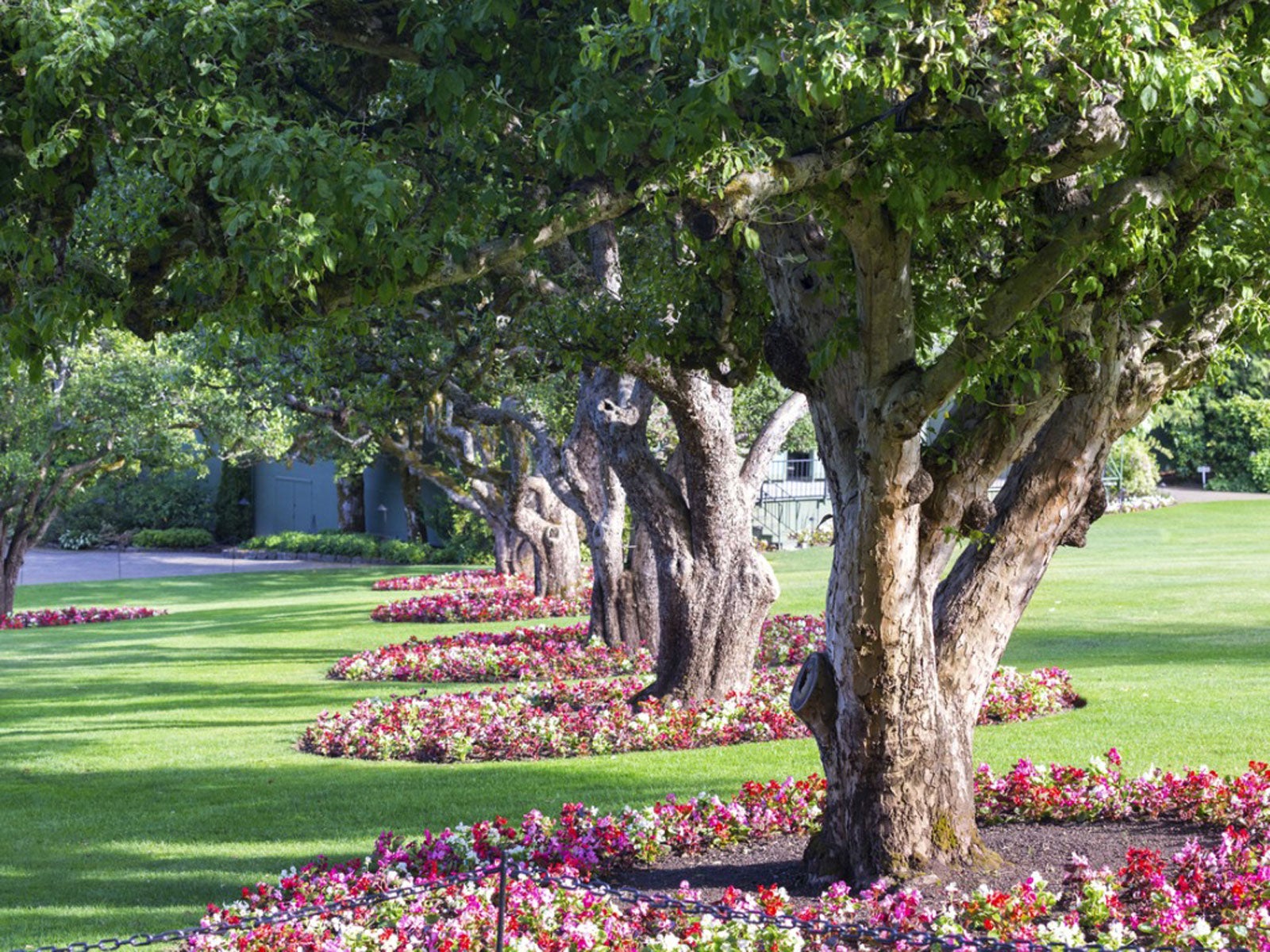Landscaping Beneath Oaks – What Will Grow Under Oak Trees


Oaks are tough, magnificent trees that are integral parts of many western ecosystems. However, they can be damaged easily if their very specific growth requirements are altered. This often happens when homeowners try landscaping beneath oaks. Can you plant under oak trees? Limited planting under an oak tree is possible as long as you keep the tree’s cultural requirements in mind. Read on for tips.
Landscaping Beneath Oaks
Few trees add more character to a backyard than mature oaks. They anchor the soil, offer shade in hot summers, and also provide room and board for birds and other wildlife.
Mature oaks also take up a lot of space. Their spreading branches cast such deep shade in summer that you may wonder what will grow under oak trees if anything. The best way to address this question is to look at oak woodlands in the wild.
Over their time on the planet oak trees have developed a careful balance with nature. They grow in areas with wet winters and hot, dry summers and have adapted to this climate. These trees soak up water in the wet winters when low soil temperatures keep fungal diseases from developing.
They need little water in summer. An oak getting significant irrigation in the summer can get deadly fungus diseases such as oak root fungus or crown rot, caused by the soil-borne fungus Phytophthora. If you put a lawn under an oak tree and water it, the tree will probably die.
What Will Grow Under Oak Trees?
Given their cultural needs, there are significant limitations to planting under an oak tree. The only type of plants you can consider for landscaping beneath oaks are plant species that do not need water or fertilizer in summer.
If you visit an oak forest, you won’t see extensive vegetation under oaks, but you will see clumping native grasses. You can consider these for landscaping beneath oaks. A few ideas that deal well with summer drought include:
Gardening tips, videos, info and more delivered right to your inbox!
Sign up for the Gardening Know How newsletter today and receive a free copy of our e-book "How to Grow Delicious Tomatoes".
- California fescue (Festuca californica)
- Deer grass (Muhlenbergia rigens)
- Purple needlegrass (Nassella pulchra)
Other plants you may want to consider include:
- Wild lilac (Ceanothus spp.)
- California iris (Iris douglasiana)
- Creeping sage (Salvia sonomensis)
- Coral bells (Heuchera spp.)
In the areas at the dripline that get a little more sun, you can plant manzanita (Arctostaphylos densiflora), wood rose (Rosa gymnocarpa), creeping mahonia (Mahonia repens), evergreen ribes (Ribes viburnifolium), or azaleas (Rhododendron).
Tips for Planting Under an Oak Tree
If you decide to go ahead and put in plants under your oak, keep these tips in mind. Oaks hate to have their soil compacted, drainage patterns changed, or the soil level altered. Take care to avoid doing this.
Keep all plantings a significant distance from the tree trunk. Some experts recommend not planting anything within 6 feet (2 m.) of the trunk, while others suggest that you leave the soil completely undisturbed within 10 feet (4 m.) from the trunk.
That means that all plantings must be done outside this critical root area, near the tree’s dripline. It also means that you should not irrigate this area in summer at all. You can use organic mulches in the root area which can benefit the tree.

Teo Spengler is a master gardener and a docent at the San Francisco Botanical Garden, where she hosts public tours. She has studied horticulture and written about nature, trees, plants, and gardening for more than two decades. Her extended family includes some 30 houseplants and hundreds of outdoor plants, including 250 trees, which are her main passion. Spengler currently splits her life between San Francisco and the French Basque Country, though she was raised in Alaska, giving her experience of gardening in a range of climates.
-
 Looking For Plants To Give You The Soft And Fuzzies? Try These 5 Fuzzy Leaf Plant Options
Looking For Plants To Give You The Soft And Fuzzies? Try These 5 Fuzzy Leaf Plant OptionsLovers of texture, drama, silver foliage and tactile plants will adore these special sensory garden additions. These fuzzy leaf plant options will leave you all aglow
By Susan Albert
-
 Get Ready For A Summer Of Hummers! Grow These Full Sun Hummingbird Plants and Flowers
Get Ready For A Summer Of Hummers! Grow These Full Sun Hummingbird Plants and FlowersIf you’re lucky enough to enjoy a sunny backyard, make sure you are maxing out on your pollinator opportunities and grow these full sun hummingbird plants and flowers
By Tonya Barnett